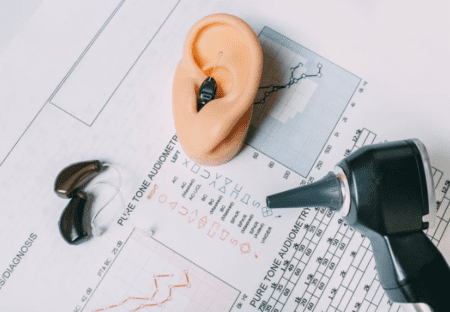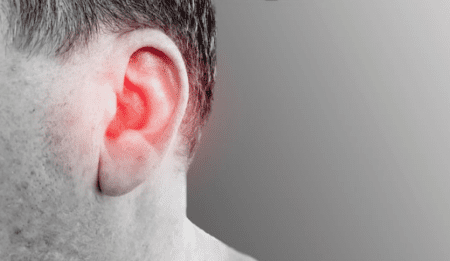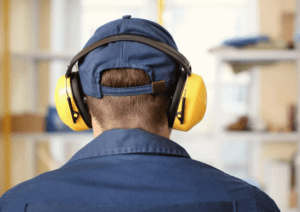Last Updated on March 10, 2025 by Paige LeJeune
Did you know there’s a test that can show if your hearing loss is work related and caused by prolonged noise and loud noise? Especially for workers in noisy offshore environments like oil rigs or vessels where noise levels exceed safe limits. The test is called an audiological evaluation. It’s quick and painless and, most importantly, it will give you critical information about your hearing health.
What’s an Audiological Evaluation?
An audiological evaluation is a full hearing test done by an audiologist or hearing specialist. The test measures your ability to hear different frequencies and sound levels. For offshore workers, this test can show results for noise induced hearing loss (NIHL) which is often caused by working in high decibel environments.
An audiological evaluation can also diagnose sensorineural hearing loss which is often caused by prolonged loud noise exposure.
Noise induced hearing loss will show a distinct pattern such as difficulty hearing high pitched sounds or understanding speech in noisy environments. These patterns can help identify the cause of hearing loss and link it directly to workplace noise exposure.
Hearing Loss Signs and Symptoms
The signs and symptoms of hearing loss vary depending on the type and degree of the condition. Common signs and symptoms of hearing loss are:
- Difficulty hearing high pitched sounds
- Feeling like your ears are plugged or blocked
- Ringing or buzzing in the ears (tinnitus)
- Difficulty understanding speech in noisy environments
- Need to turn up the volume on the TV or radio
Common Causes of Occupational Hearing Loss Offshore
According to the CDC, occupational hearing loss is not only the most common work-related illness; it is permanent. Offshore environments are especially susceptible to excessive noise, as they often deal with noisy equipment that may cause significant hearing difficulty over a long period of time. It may seem like background noise to a seasoned worker, but continued exposure to loud noise will put anyone at a higher risk for damaged hearing.
Hearing impairment could be the result of numerous types of offshore occupational noises. A few noise sources that could cause temporary hearing loss, or even complete hearing loss, include:

Vessel Engines: Engines and propellers on ships produce continuous loud noise that contributes to gradual hearing loss.
Blasting or Impact Noises: Sudden loud noises like metal on metal impacts can cause immediate hearing damage.
Long term exposure to these conditions even with some hearing protection can cause permanent damage, affecting both hearing clarity and quality of life. That’s why occupational noise induced hearing loss is a major and common problem for offshore workers.
How Does the Test Help Offshore Workers with Noise Exposure?
An audiological evaluation helps workers with hearing loss:
Identifies the Source: It shows patterns that indicate noise induced damage from work related activities.
Supports Legal Claims: For offshore workers who are filing a claim under a maritime law like the Jones Act, this test can be used as evidence to show the link between hearing loss and occupational noise exposure.
Encourages Early Intervention: Early detection of hearing loss can prevent further damage and ensure that workers get the medical care and accommodations they need.
In severe cases of hearing loss a hearing aid may be recommended to help with speech and other sounds.
Why Regular Hearing Tests
Regular hearing tests are necessary to detect hearing loss and prevent further damage. OSHA recommends that workers who are exposed to loud noise at work get their hearing tested regularly to avoid permanent hearing loss.
Regular hearing tests can:
Detect hearing loss early when it’s easier to treat
Monitor hearing conservation programs
Identify workers at risk of hearing loss and provide extra support and protection
Create a healthy environment that prioritizes occupational safety
By doing regular hearing tests, employers are able to improve communication and optimize occupational safety conditions. This helps to prevent hearing loss as well as other noise related occupational injuries (such as cognitive decline, high blood pressure, and sleep disorders). Regular monitoring is a crucial part of a hearing conservation program.
Employers are Required to Implement a Hearing Conservation Program
If you work in an environment where noise exposure is at 85 decibels or above (roughly the volume of a food blender) averaged over 8 hours or more, then your employer is required by OSHA to implement a Hearing Conservation Program. What does this mean?
Your employer must monitor noise exposure and identify the specific employees who are being exposed to loud noise for extended periods of time.
Your employer must establish and maintain an audiometric testing program at no cost to the employee.
In the case of questionable audiometric testing results leading to suspected hearing loss, your employer must refer you to a clinical audiological evaluation or otological exam.
Your employer must provide hearing protectors if you are exposed to loud noise for an extended period of time.
These are only a few of the precautions that employers are required to take in environments that are more likely to causing occupational hearing loss. You can find more information about what steps your employer should be taking in OSHA’s Hearing Conservation booklet.
Supporting Workers with Hearing Loss
Employers have a duty to support workers with hearing loss and provide a safe and healthy work environment. This can include:
Providing hearing protection devices like earplugs or earmuffs to reduce excessive noise exposure
Noise controls like soundproofing or noise reducing equipment
Regular hearing tests and monitoring
Accommodating workers with hearing loss by providing tools like written instructions or visual aids
Training on hearing conservation and hearing protection device use
By supporting workers with hearing loss employers can prevent further damage and a safe and healthy work environment. Hearing conservation programs are key to protecting workers hearing health.
Maritime Laws for Offshore Workers with Hearing Loss
Under the Jones Act, offshore workers are entitled to compensation for injuries sustained from their work environment. This can include:
Medical expenses for diagnosis and treatment.
Lost wages because of hearing loss that affects your ability to work.
Pain and suffering from your condition.
Severe hearing loss can impact your ability to work, as well as taking a toll on your quality of life.
A maritime lawyer can help you get the evidence you need to receive fair compensation for your injury. The results of your audiological evaluation would be crucial in building a strong case.
What to Do If You Think Your Hearing Loss is Work Related
If you think your hearing loss is from occupational noise exposure offshore:
Book an audiological evaluation with a qualified professional.
Keep a record of workplace noise exposure, including the equipment you work with and the duration of exposure.
Talk to a maritime lawyer to discuss your rights and options for compensation under the Jones Act or other maritime laws.
On top of all of this, participating in a hearing conservation program can help prevent further damage and protect your hearing.
Protect Yourself With a Hearing Conservation Program
If you think your hearing loss is work related don’t wait. An audiological evaluation is the first step to figuring out what’s going on. It’s not just about your rights; it’s about your quality of life.
Call The Young Firm today.




